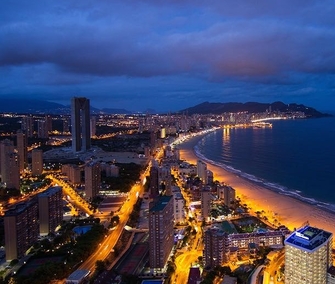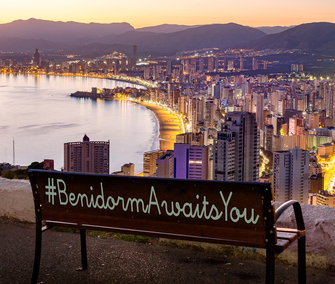
The Benidorm model is being studied as a success case by a congress on sustainable mobility.
The refurbishment of Mediterráneo, the pedestrianization of Tomás Ortuño, the cycling network, the deterrent parking areas, and the electric charging points have been considered as examples of management.

The efforts of the City of Benidorm to achieve a more eco-friendly urban mobility have been highlighted as a management benchmark during an international congress in Valencia. The mayor, along with the city's chief engineer, presented the talk "Benidorm, a model to follow in sustainable mobility" as part of the 'eMobility World Congress' event.
In their presentation, before a large audience including the Director General of Transport, the city of Benidorm detailed that these initiatives, initiated with the Sustainable Urban Mobility Plan (PMUS) of 2016, aim to transform Benidorm into a more welcoming and comfortable city.
The mayor emphasized that, following the PMUS, the ratification of several documents in subsequent years, such as the Sustainable Urban Transport Plan (PTUS); Sustainable Parking Plan (PES); Universal Accessibility Plan; Global Road Safety Plan; Cycling Plan; Electric Mobility Plan (MOVELE), and recently the establishment of a Low Emission Zone initiated in 2021 and now extended to 75 hectares, have allowed Benidorm to prioritize pedestrians, improve accessibility and safety of its spaces, increase pedestrian use to 70% of daily trips, and reduce the use of private vehicles by 15% while public transport and bicycle use continue to rise.
The case of the pedestrianization of Tomás Ortuño street was highlighted as the most representative of these policies towards sustainable mobility, which after its pedestrianization, has now become one of the busiest and most accessible streets in Benidorm.
This experience has been replicated in more than 40 streets and avenues, transforming urban mobility. Also, the total remodeling of the Mediterranean Avenue was highlighted, which went from four traffic lanes to just one, widening sidewalks, implementing bike lanes, and limiting speed to 10 km/h, radically changing the use and perception of space.
Furthermore, the creation of deterrent parking lots with more than 8,000 spaces, improvements in connectivity to the city center, expansion of the cycling network to over 130 kilometers, implementation of the Low Emission Zone, and the development of the Electric Mobility Plan (MOVELE) to increase electric vehicle charging points, were other achievements mentioned.




























